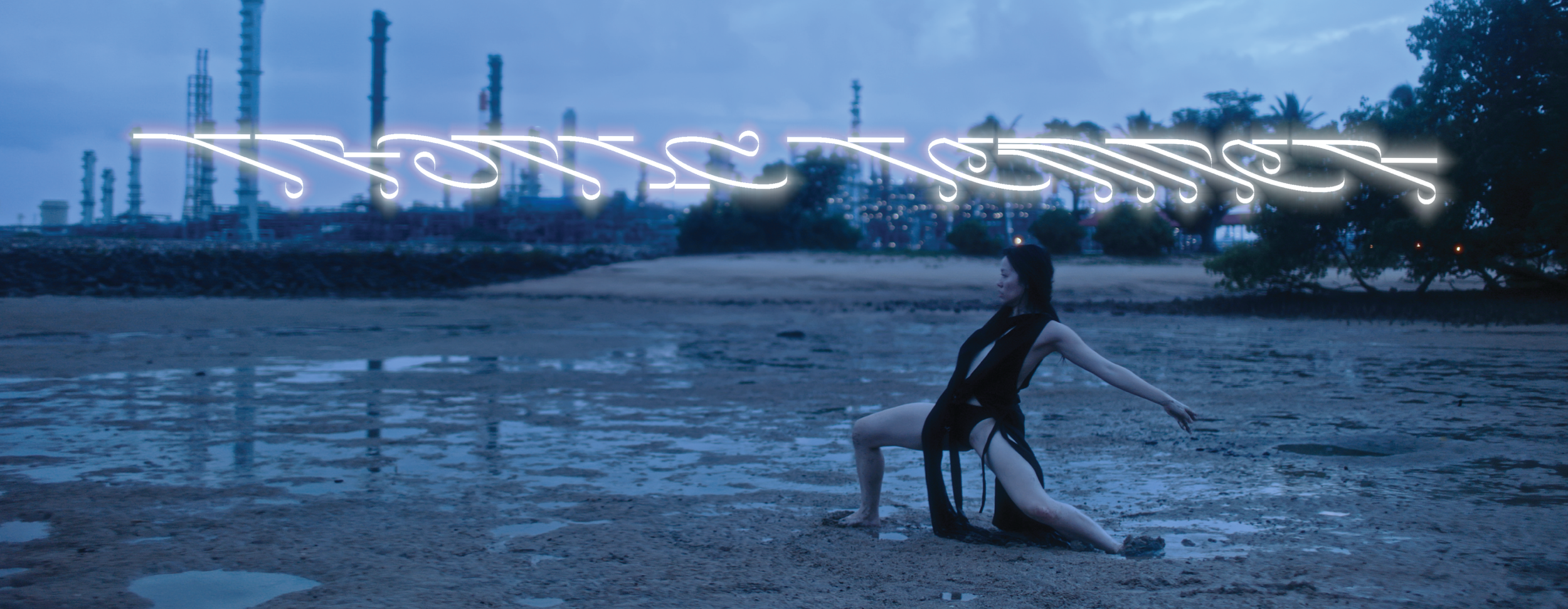Tropic Temper
Elizabeth Gabrielle Lee’s debut film explores a visual language that subverts the very Singaporean need for perfect control
Film still from Tropic Temper (2024). Image courtesy of Elizabeth Gabrielle Lee.
Dear Reader,
Anyone who has come to Singapore will know that officially, we are a nation that prides itself for its cleanliness and convenience. In Elizabeth Gabrielle Lee’s new short film, Tropic Temper, the opening sequence shows a typical skyline of high-rise condominiums and perfectly placed greenery. A “disciplined tropics” is how the artist describes it. This film is in part a result of her research in Endarkenment, an aesthetic proposal that turns its face from Western Enlightenment discourse and highlights Eastern phenomenologies as an alternative framework for aesthetics. In the film, we see how the feeling of ambivalence, spectral tropicality; a term solidified by Sofia Siddique Harvey in her essay Mapping spectral tropicality in The Maid and Return to Pontianak; maximalism and nostalgia play out in a mish-mash of codes Lee categorises as Tropic Noir. In the aesthetics of Tropic Noir, the environmental conditions of the tropics play a big part in the events that occur. It acts as a catalyst for the displacement of supernatural beings, their faces and hair imbued with a dewy sheen, cloaking the main characters in humidity.
Film still from Tropic Temper (2024). Image courtesy of Elizabeth Gabrielle Lee.
As a result of extreme terra-forming and environmental control to allay Singapore’s equatorial heat, the film hints at local forestry inevitably being cleared for development into air-conditioned environments or polluted by toxic chemicals. Enter Nancy, a Peranakan Nonya ghost and J.A.C.E. an omniscient spirit, a vestige of a past that, as a result, becomes displaced and haunts these locations that do not fit into an optimised landscape.
Film still from Tropic Temper (2024). Image courtesy of Elizabeth Gabrielle Lee.
In real life, Singaporeans love to complain about the hot weather and the sterile feeling of living in a “cultureless” city-state. “The air here is painfully pure,” whispers J.A.C.E. in a dreamy voiceover. Any impulse to dress up for self-expression seems to be defeated by the hot weather. Often, the layman would cite practicality as the modus operandi. The film says otherwise in the costume design put together by Malaysian-Swedish designer, Azura Lovisa. With a namesake brand of her own, she dressed the spectral characters in her own designs inspired by traditional Malay shamans. The use of silk and cutout strips on the garment extended and exaggerated the range of languid and jerking movements performed by dancers Tan Xin Yen and Sonia Kwek. Ironically, imbuing a certain liveliness against a commercialised backdrop.
Film still from Tropic Temper (2024). Image courtesy of Elizabeth Gabrielle Lee.
Lee shows her prowess in directing with Sophia Sim helming the production team. The cinematography by Russel Morton plays to a style Lee often references in her work, taking inspiration from films Lee also categorises as Tropic Noir works; Kaili Blues (2015) and The Wild Goose Lake (2019). Evoking a sense of beauty in the face of alienation, the colourist Eugene Seah uses a heavy wash of cool lighting throughout. As a counterpoint, the musical compositions of Safuan Johari carries tension in each scene like an overstrung violin. Lee’s editing is characteristic of her wide-ranging research practice, splicing 3D effects by Rina Cho with VCR found footage and Morton’s shots to conjure a narrative that is as unsettling as it is beautiful.
In the humidity of the tropics, sweat becomes an unshakable second skin. It is a shroud that has no clear endings, lingering in the atmosphere as ghosts and humans walk alongside each other.
Catch you next month!
Best,
MFYG
Elizabeth Gabrielle Lee is a multidisciplinary practitioner interested in re-contextualising soft histories found in photography, film, writing, oration and curation. She co-runs a research and curatorial platform XING exploring East and Southeast Asian visual practices, hence subverting Western hegemonic ideas of the region’s visual culture. Lee is a Lecturer in the BA Creative Direction for Fashion course at London College of Fashion, and splits her time between London and Singapore.




